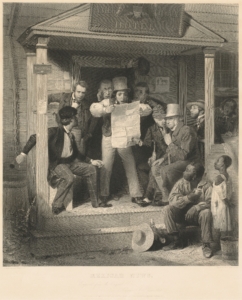Creative Business Dashboards: Metrics, Tools & Weekly Check-Ins
Checkups are a very good thing. Prevention is less costly than unexpected maintenance AND who doesn’t want to hear something is better than expected or even just “everything is normal?”
Asking how I am doing physically, emotionally, socially and financially is critical to creating a thriving creative practice—and potentially a small step that can be taken today to get there. BUT as an artist or entrepreneur, we are often on the adventure on our own. There is typically NO meeting between the manager and the employee—we are both.
A “meeting with myself” doesn’t seem relevant. Who has time to stop and ask questions? However, it is valuable to create a space where this meeting can still take place. A dashboard is a great tool for the boss (you) to ask the worker (also you), “How is it going, and what can I help you with?”
Meetings are a method for communication, and the dashboard is a tool to facilitate dialogue. A meeting with yourself can happen at any time—both parties will inevitably be available when you are free. It just depends on you to decide you need to meet. This check-in can happen on any day at any time, but it might be a meaningful way to either start the week off or to recap the week at its completion. Potentially, you do both to provide direction (on Monday) and accountability (on Friday).
What should the meeting entail?
A good meeting is one that has a clear agenda.
Reviewing a dashboard is a pretty easy agenda. A dashboard is likely most familiar as an experience with a car. The dashboard in our car, in abstract form, highlights performance indicators, allows us to store our destination and offers directions on how to get there (thank you, GPS).
A good business dashboard can do the same. It is a place to keep goals front and center, a place to collect metrics of progress toward those goals, a place to capture tasks to achieve the goals, and a place to provide easy access to tools to help you along the way.
Goals: Where do you want to go?
A good destination is one that is clear and achievable.
It isn’t easy to get to a place that is not defined or accessible. This is true in business. If we do not know what we are trying to achieve, it will be incredibly hard to achieve. It is very easy to let circumstances distract us and lose sight of what matters to us—i.e. not always know where we are going.
A dashboard that is used consistently is a great place to keep an eye on what you want in work and life.
Metrics: How do you know if you are getting there?
Being creative and ambitious are connected. Often, the vision that is held by someone who is ambitious is beyond the present ability to accomplish. This is a good and healthy thing, BUT it does mean that we may need other metrics beyond “yes, I did that” to know where we are in relation to where we are going.
The checkbox to completion might be too far away to motivate us on the day to day. It is incredibly helpful to be able to see and assess progress. A dashboard can provide a place for us to see our goals coming into existence.
Tools: What will help you get to where you want?
A big journey likely requires tools to get there. Even a road trip needs a vehicle, tunes/podcast/book and good company.
Building a business requires many frameworks, templates, apps and more to sustain itself. If the tools are dull or difficult to find, they waste energy and time. Having tools readily available and ensuring they are in working order and easy to find can conserve energy for doing the work. A dashboard can also serve as a toolbox.
How to Grow a Creative Business? Keep Going
If you are curious what a dashboard for your business might look like, or you have already stepped into creating an operating system for your business but would like to sharpen it, reach out to us. We love operating systems and have dashboard templates we are eager to share and help you build.
Banner Art Credits: At Her Toilet, 1868, by Felice Beato, is a hand-colored albumen print that captures a moment of quiet preparation. Part of Beato’s series Views of Japan, the image depicts a woman at her mirror—poised between stillness and intention. Digitally recontextualized here, it serves as a metaphor for the essential, often overlooked act of self-review. Just as this subject pauses to check her reflection, a weekly dashboard check-in offers creative entrepreneurs the opportunity to examine their direction, sharpen their tools, and prepare for the work ahead.





